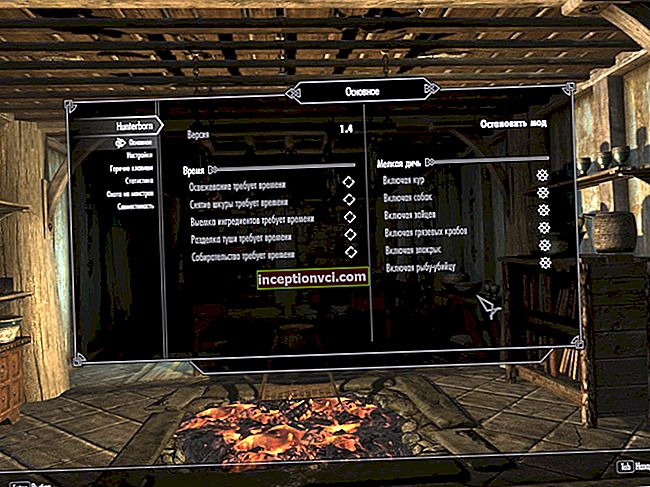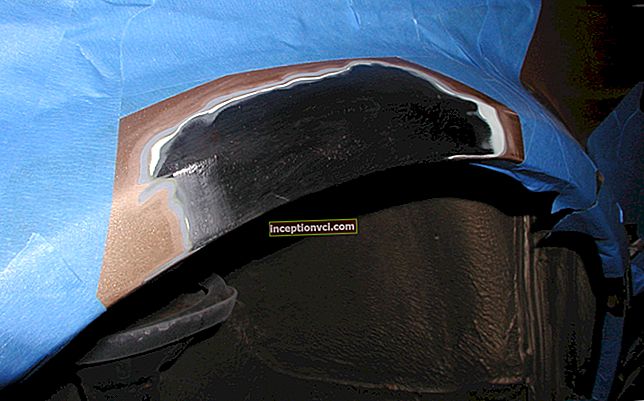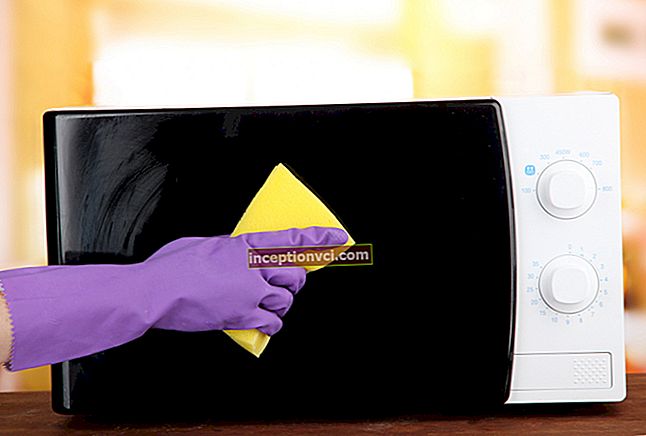As the fourth largest manufacturer to enter the interchangeable lens small SLR digital camera market, Sony has made a good impression.
DSLRs provide high image quality and photographic versatility with interchangeable lenses. The Sony NEX-5 delivers all of this better than any other model so far in a sleek and robust design.
There are a lot of interesting innovations in the Sony NEX-3, so it's hard to know where to start. The big news is that Sony's NEX series cameras are the first digital interchangeable lens cameras capable of continuous autofocus and exposure settings while recording video, with all components, bodies and lenses, supporting this feature. (The Panasonic GH1 was the first to take on this challenge, but only Panasonic HD lenses supported this additional capability.) Video is the only parameter where the two new cameras differ significantly: the NEX-5 supports 1080i AVCHD video recording, while the NEX -3 is limited to 720p video capture.
The 14-megapixel Exmor APS HD CMOS sensor is responsible for the high image quality of both cameras, the new Bionz processor has worked diligently in each one.
Several hot features have been taken over from the latest Alpha and Cyber-Shot digital cameras, including Expanded Panorama, Auto High Dynamic Range, Manual Twilight, and Anti-Motion Blur modes, each of which composites and matches multiple images into one seamless frame. This is pretty impressive functionality. As if that weren't enough, Sony also announced upcoming updates (even before the camera was announced!) That will bring a dedicated 3D Expanded Panorama mode that will work with multiple Bravia TVs.
The NEX-5 and NEX-3 boast a wide 3-inch LCD display with 921,000 dots. Surprisingly, the super-thin LCD is capable of tilting up to 80 degrees up and 45 degrees down for easy viewing. With TruBlack technology borrowed from Sony photo frames, shooting indoors or in bright light is equally convenient.
Judging by the name of the new camera, they no longer use the alpha mount, instead Sony introduced a new E-mount, releasing two lenses at once that come in the kit. The first is a fairly standard 18-55mm f / 3.5-6.3 lens with Optical SteadyShot, and the second is a fixed 16mm f / 2.8 lens. Both have beautiful aluminum and polished bronze finishes.
An alpha lens mount adapter is available, but autofocus will be disabled on the NEX camera. There are also two converters for use with a 16mm lens: an ultra wide converter with 12mm equivalent focal length and a Fisheye converter.
Finally, the 18-200mm f / 3.5-6.3 OSS lens is slated for shipping sometime later this year.
Both cameras accept Memory Stick Pro Duo / Pro-HG Duo / PRO-HG Duo HX and SD, SDHC, and SDXC memory cards.
User review of Sony NEX-5
Appearance and design

Unlike other SLD (single-lens cameras) digital cameras, Sony's two new NEX-series cameras don't try to look like SLR or ultrazoom. Instead, they look more like an average digital camera with a large lens. The concept borders on absurdity, especially with the 18-55mm lens fitted, but the Sony NEX-5 has managed to remove that seemingly over-emphasis on optics. After years of relative similarities between digital camera designs, it's nice to see something new. The Sony NEX-5 certainly has a bold design.
Smallest among the competition, the Sony NEX-5 is also lightweight. Its magnesium alloy carcass weighs only 288g with battery and card, adding a lens raises the weight to 502g. In comparison, Panasonic G2 weighs 618g, Olympus E-P2 weighs 539g and Samsung NX10 weighs 610g, each with lens included , battery, memory card.

As the sports car design emphasizes its ability to hold the road well against the external factors of a low profile with large, wide wheels, the Sony NEX design shows its focus on light with a small compact body with a large polished bronze lens (18-55mm in picture ). This is more true for the NEX-5 than for the NEX-3. At the bottom left of the lens is the lens lock button, and at the top left is the autofocus button and self-timer indicator. Below is the shutter button, where you can also see the infrared remote control port.

On the top of the Sony NEX-5, you see stereo microphones marked with L and R, and three speaker holes. Between the two microphones is a lid that you lift up and back with rubber loops to access a small auxiliary port. While the port accepts an external flash and an optional microphone; Sony plans to release an optical viewfinder with a 16mm field of view as an option.
Here you can see the size of the 18-55mm lens compared to the camera body, the ratio is exacerbated by the presence of a hood. The 16mm f / 2.8 lens also has an aluminum body and looks bigger than it is thanks to the metal mounts a few millimeters in size. The lens is, in fact, as thick as an Olympus 17mm f / 2.8M Zuiko. The 16mm lens can also be fitted with a wide-angle adapter and a Fisheye adapter.
The large rear-access power switch is separate from the shutter button, which is thus better positioned against the hand. Despite the narrow space between the arm area and the lens, the NEX-5's grip is comfortable enough, much thicker than the NEX-3, with a deep finger groove. The play button is also located on the top panel, which is somewhat confusing at first, because you can't quickly find it without looking and activate it, while your gaze is fixed on the LCD.

Pay attention to the position of the two strap mounts. Sony NEX cameras are designed to be hung with the lens facing down. This has several advantages, one of which is that the screen is less likely to get scratched on the shirt buttons, and the small camera body will not rotate forward at different angles depending on which lens you have. Sony knows lenses tend to pull the camera forward, especially if the body is so light, so why not hang the lens down straight away? Thus, already on this example, you can see that the designers were meticulous about the development of the camera, taking into account even the smallest details.
Tilting LCD

The 3-inch LCD tilts up 80 degrees and down 45 degrees and has 920,000 dots. The screen pivots upward more easily than it does downward, and it takes a little finesse combined with strength to coax it into the 45-degree bottom position.
The steering wheel is very well designed, the finger rests comfortably on it, while there is good grip. Instead of filling up precious space with other buttons, Sony has developed a new context-sensitive interface. The responsiveness of the menu is very good, with instant response to wheel clicks. It is sometimes confusing, but always responds well. More on this later.
Inside Sony NEX-5
Sensor
Sony NEX-3 and NEX-5 are equipped with the third generation Exmor sensor. It's an APS-C sized CMOS HD sensor that Sony says is 60% larger than a 4/3 sensor and 13 times larger than a typical video camera sensor, so they expect performance gains in both areas.
Dust
Sony NEX cameras have a dust control and removal system, a protective coating on the low-pass filter and a vibration system of a low-pass filter for shaking.
CPU
Sony doesn't say much about the new Bionz processors, other than that it's the third generation of the chip.
Autofocus and metering
The Sony NEX-5 uses only contrast detection as autofocus. It has two autofocus modes AF-S for single focusing and AF-C for continuous focusing. There are three area AF modes, including center, multiple, and flexible area. You can also select Full AF, DMF, which adjusts focus after autofocus. Focus is fast and fairly accurate.
The Sony NEX-5 has spot, center-weighted and multi-zone metering capabilities.
Optics
Sony's new lenses are designed to be faster in response to camera signals than conventional SLR lenses, with the explicit purpose of creating an autofocus environment for video shooting. Most DSLR cameras either disable autofocus during video recording, or they essentially interfere as focusing is distracting from the subject due to lens motor noise and excessive focus.

Sony has developed new lens systems for the NEX line with a shorter flange (back-focal length) to produce more compact lenses with a faster, more accurate focusing drive to meet the demands of autofocus during video recording, which operates based on contrast detection. The lens shell has also been adapted to stepper motors to continuously adjust the iris to prevent sudden changes in brightness during video recording.
White balance
White balance includes options for auto, daylight, shade, cloudy, incandescent, fluorescent, flash, color temperature / filter, and custom.
Menu
Sony has introduced a completely new menu system to the NEX series cameras that looks decent and functions pretty quickly. The general interface is convenient, especially after the stage of familiarization with the basic controls.
Features of the
The Sony NEX-5 comes with a fairly large number of features borrowed from the Cyber-Shot line, including an interesting extended panorama function.

Data storage and battery
The Sony NEX-5 is compatible with two memory card standards, each with different variations. First, Memory Stick Pro Duo / Pro-HG Duo / PRO-HG Duo HX, and Sony now also supports SD, SDHC, and SDXC cards in the same slot.
The Sony NEX-5 uses a 7.2V 1080mAh NP-FW50 Li-ion battery. According to tests, the Sony NEX-5 is capable of taking about 330 shots on a single charge.
Shooting with Sony NEX-5 and NEX-3
Sony makes cameras that you love quickly. Not all of them are great, but when it comes to design, Sony is generally on top. In both NEX-3 and NEX-5, the company has shown its design skills, honed over the years at the best. Although they are physically very different, functionally they are almost identical.
Unlike startup time, NEX cameras focus and shoot very quickly, especially in good lighting conditions. Focus may take a little longer in low light conditions as with most contrast cameras. Turning on the camera, however, is like waking up from a very deep sleep. You flip a switch and nothing happens. Then, after half a second, icons appear on the screen. After another half second, the screen starts to light up from completely black to full brightness.
It should be noted that even after working with large SLR cameras, shooting with such a small camera is very natural. Perhaps someone will say that a large lens looks absurd on a small camera body, but we live in the digital age, this is more than appropriate. Lens, viewfinder and hand grip: that's all a photographer needs to work.
Optics

Surprisingly, the 18-55mm lens is used more often than the 16mm lens. In the micro 4/3 camera, during testing, everything was the other way around, where 17 mm was much more often in demand.The good news is that this wide-angle lens really captures the scene, great for landscapes. The bad news is that you have to think in advance how to frame the frame so that there are no distorted, unnatural images of people around the edges.
A fairly large 18-200mm is planned for the foreseeable future, but an adapter that works with a different Alpha mount will increase the design. The only drawback is that these lenses will have to be manually focused, as they are not designed to work well enough with the NEX contrast AF system, according to Sony.
However, if wide-angle lenses are your preference, the 16mm is wide and flat enough, and you can further expand its reach with two accessory converters, which will also be available. The VCL-ECU1 converts a 16mm lens into a 12mm lens thanks to its 0.75x magnification. The Fisheye Converter gives you a very wide view with all the distortion you'd expect from a fisheye lens.
Low illumination

Conveniently, the flash is bundled with the Sony NEX camera, and not included in the aftermarket, as Olympus did. The flash is absolutely tiny, lies directly above the lens, the socket with a special connector is hidden under a plastic cover. The screw tightens the flash in place, all the elements fit perfectly, giving the impression of a single, monolithic construction.
Despite all this, what's better than a cute little flash that can be easily dismantled? A camera that doesn't require a flash at all. And this is what you get with the Sony NEX-5. In addition to handheld night shooting, Sony has taken some steps that dramatically improve the already high ISO performance.
I really enjoyed shooting in low light with the Sony NEX-5, only with Auto ISO turned on. The camera may not work wonders, but these will be the kind of shots that you will never get in normal shooting.
Handheld night shooting
In this mode, the camera does a trick that we first saw in some of Sony's back-lit sensor cameras released last year. No, this is a front light sensor, but it still takes six shots at shutter speeds without hand shake, and combines them into one image with a quality and noise level that you will never get without using a high ISO. The only drawback of all this action is that the camera works quite loudly as a mirror at the time of such shooting, so it is better not to take pictures of sleeping children.
Anti-motion blur mode also takes a burst of shots at a fast shutter speed and flattens multiple images to eliminate motion blur that is exacerbated by telephoto lenses. Again, this makes quite a bit of noise and people nearby may wonder what you are doing.
Light panoramas
It's nice to see Sony have managed to put their successful extended panorama mode into the NEX series cameras. The NEX-5 and NEX-3 are supposed to shoot much larger and better than their Cyber-Shot counterparts, and then combine the images into one shot.

Intelligent Panorama mode analyzes the scene to find moving objects and place only one of the specified objects in the final panorama. For example, a car moving across a scene may appear more than once as the camera moves along the scene, but smart processing mode removes multiple images when possible, leaving only one image of the car. The processing does not always work out best, but since most people shoot panoramas in relation to static scenes, it will work reasonably well in the most common situations where objects are far away and not moving quickly.
Auto HDR
Another burst mode is for enhancing Sony NEX-5 HDR images. Dynamic Range Optimization conducts electronic processing to enhance shadow detail. Auto HDR captures a series of up to three manual images that separately captures bright, medium, and dark details and then combines them into a single photo, with superb detail in all of these areas. Often these images can appear flat because they are essentially the result of a process of changing the contrast of an image. The good news is that the Sony NEX-5 also retains a copy of the average exposure before HDR images are captured, giving it the next number in the series. While HDR images often look great on screen, sometimes you just have to rejoice that there is an unprocessed copy, as HDR can look too unrealistic on a computer screen. Not only NEX shots, by the way, but all HDR images.


The Pentax K-7 has the same function, but Sony's implementation automatically aligns all three images, even after handheld shooting, while most K-7 shots must be taken on a tripod to avoid image misalignment. The photo above is a great example, perfect for demonstrating the capabilities of Auto HDR. The front part is lit with bright sunlight, part is in the shade, the doorway is even darker. The human eye is able to see details in bright and shaded areas. But the camera is structured differently. Overall, in this case, HDR did exactly what it had to do: give you a semblance of what the eye sees in one image. Our eyes and mind compensate for the difference in lighting when we look around a scene in high contrast, but a digital camera really can't do that without HDR assistance, at least not yet.
Focus
The focus is active all the time. Most photographers choose the center-point AF option regardless of the camera type of camera, but the Sony NEX-5 has the strange habit of just selecting the entire image as the center, especially in low light conditions. So I had to switch to a movable point, which has the added benefit of setting the desired position somewhere in the corner of the screen, which sometimes comes in handy.
The focus is also quite fast, very close in this parameter to some of the other competitors in this class. In wide and tele-position, the overall AF lag is 0.44 seconds on average, and the shutter lag in pre-focus is 0.12 seconds. Launching to the first shot is about 1.0 seconds, but it actually takes about 2 seconds before the screen becomes fully live and responsive. If you install a continuous autofocus camera, focus will be very fast as the AF contrast detection system quickly checks and rechecks it many times per second. It can be rather odd to feel the pulsation of the entire body while you try to hold the camera still.
Bokeh
Simply put, bokeh displays details of the scene that are outside of depth of field, and Sony boasted that their large APS-C sensor (which has a small depth of field) combined with their optics gave better bokeh than micro 4/3 cameras. It seems like the truth, the set of two lenses treats the background elements in a much artistic way, making them a little softer and smoother. Bokeh quality can vary slightly depending on the lens you are using.
Simple menu? Of course, this is not all the good news. The Sony NEX-5's menu is a mixture of menu items and solutions from both compact cameras and DSLRs, bringing together the best of both worlds. In this case, Sony says they have completely redesigned the interface to make it easier to control with just a few buttons, but at times it recalls the inconvenience of some of Sony's Cyber-shot cameras with the latest menu system. The first impression of the NEX-5's menu was very positive because it is fast and beautiful. The most attractive is the Scene menu item, which includes high-resolution photographs that illustrate the purpose of each. Very nicely done. The sound that accompanies the selection menu - a sharp click - is pretty good.
But after some time, the impression changes somewhat. Rather than using the truly simple menu from other Alpha cameras, which is one of the best in the class, Sony opted for a more complex layout that uses buttons to get to the icons it takes to get to the menu, some of the routes are quite long - and when you find yourself at the end of a very long list, pressing down does not take you back to the first menu item. To make matters worse, once you've found and adjusted a menu item, you're automatically taken to capture mode, rather than back to the menu where you could make additional adjustments. Instead, you must go back to the menu and start over from the very top.
Due to the high resolution of the screen, there are many icons related to the camera settings on it at the same time. Once the pop-up menu appears, you need to select the desired item from six: shooting mode, camera, image size, brightness / color, playback and settings. This is where tabs would be nice, because it's not entirely obvious that ISO and DRO are hidden under the Brightness / Color menu and not under the Camera menu.
It would be much more convenient if the shortcut menu let you change things like ISO or DRO / HDR. But you have to press the menu button, go to brightness / color, scroll down to DRO / Auto HDR and press the center button. The screen then goes completely black and you enter Live View, where DRO / Auto HDR options pop up from the right side of the screen. Rotate the command dial until selection is displayed and press the center button again. Enjoy!
There are also many cases where the menu becomes somewhat inexplicable. The menu item may be grayed out and grayed out, and the pop-up explanations do not offer any remedy. The Face Detection option, for example, is not available by default, and the only way to activate it is to activate multi-AF point AF in the first place. While the camera has 80 different photography tips, none offers a solution to a fundamental question like this one. Everything is there as far as operation is concerned, yes, but some of these materials should be turned on just automatically (turn on face detection, and it automatically entails the inclusion of multi-point AF and multiple exposure areas).

Another feature is that you cannot view images and videos in playback mode at the same time. Playback shows a list of the available items that you captured last. That is, if you finished shooting with a still image, then when you press the play button, you will be able to see only still images. To watch the video, you need to switch to the "video" mode. You can also press the menu button, select the view menu item, and scroll down to the Single Shot / Video item, choose between photos and videos on a separate screen.
I would also like to see the following changes in the NEX-5 menus:
- Add an option in the settings menu that allows you to set the default camera menu so that when you call the menu again, access is made to the last used position, and not always to the very beginning.
- Also, as noted above, it would be good to stay in the system menu after making adjustments, rather than go back to shooting mode.
- To make the system less dependent, let the user change more parameters, regardless of the camera mode, as in the situation with the autofocus mode and face detection function. The presence of mysterious gray elements only makes the camera more confusing for users of all levels.
- If you cannot get rid of the dependent nature of the menu, add explanatory text telling why the option is inactive, and not just write "This feature is currently disabled." It will benefit the end users more than the current 80 pages of shooting tips.
- In viewing mode, add the ability to choose between viewing videos and photos. (This is the only place where the camera really needs another button, since all the buttons on the back are already equipped with all the functionality they need.)
- Add a settings menu item that allows you to configure the lower right button as a custom rather than the default for shooting tips. Let the user customize it to further control the choice of white balance, ISO, AF area (it currently turns into focus when you are in floating point mode, so you can adjust the focus point, but it would be nice if you can was to choose, autofocus mode all the time as an option), face detection technology, metering mode, DRO / HDR, creative style, and possibly SteadyShot.
- Add a Quick Menu to give quick access to a number of general settings. (The list above is a good start, but you can add things like size / quality, video type / size, etc.)
- In future models, do not make such an emphasis on reducing the number of buttons. Even one extra button in the lower right corner of the back panel or to the left of the Video button on the corner top panel would really help with some of the complexities of the user interface.
Stabilization
There was no strong impression of the effectiveness of Optical SteadyShot from 18-55mm, but most of the shots were good, and by holding the camera still while analyzing the image on the LCD, you can see that the system seems to absorb the heartbeat very well while holding it. the camera is as stable as possible.
Video
Of course, the popular among DSLR cameras these days, the ability to capture video is implemented in this model. Its fairly inexpensive optics promise to take video operators to the next level of creativity. Large sensor with APS-C sized digital camera allows better low light performance.
The Sony NEX-5 records 1080i video at 60fps in full AVCHD format. Most impressive is that it focuses fast enough to track your subject at full camera speed.
Conclusion
Pros: Compact design; The magnesium alloy body looks sturdy, fits perfectly in the hand; Good grip Comfortable to hold despite its small size; The lenses are pretty good, they look great; Weighty enough in the hand, despite the light weight; The strap loops position this lightweight camera with the lens facing down; Stereo audio recording; The high-contrast display looks good in most conditions; Good lenses included; Great detail with a 14MP sensor High resolution, tilting LCD display; Very good exposure accuracy; Very good high ISO performance, the best of the SLD at the moment; HDR mode works well with adjustable levels; The dynamic range expansion function has adjustable levels; Manual Night mode captures and straightens multiple images into one sharp shot; Anti Motion Blur mode increases shutter speed and combines multiple images into one shot; Expanded Panorama captures wide panoramic images with a single pass of the camera across the scene; High overall performance; Fast autofocus for contrast system; Very fast burst mode up to 7 frames per second; Very fast loading speed; Dual slot for memory cards; Removable flash included; Live AF during video recording; The autofocus of a moving subject in the video is very good; Autofocus, aperture and image stabilization work almost silently: no influence on video clips; The external flash is compact, surprisingly powerful, and recharges quickly; HDMI output. Minuses: Very soft corners with both lens kits; Moderately high level of chromatic aberration and geometric distortion at wide angle; Macro images are soft with 18-55mm lens% Only two levels of noise reduction in the settings (Auto, weak); Autoexposure doesn't always work well in very low light; The posterior disc tires the thumb after a while; Non-standard flash connector; Very narrow flash coverage; No wireless flash support; Video AF area is too wide, the camera tends to pick up the background; It is not possible to set AF points during video recording: AF points selected in shooting mode are not transferred; No custom aperture, shutter speed and ISO control during movie shooting (aperture control was added in firmware V03); Inconvenient menu; There is no possibility of cropping video in the camera; The battery charges very slowly; The external flash kit is short, so large lenses and even a hood will cast shadows; The camera is noisy when shooting panoramas, HDR, and other multi-frame modes. Sony did just what they needed to do: They rocked the DSLR market. Even if they were the fourth in the category of direct view single lens digital cameras, the Sony NEX-5 and NEX-3 are unique cameras that will be well remembered for their design and superior image quality. The camera really works in the best Sony tradition. Despite the menu, it will always be convenient to take the NEX-5 to an event where a DSLR would be inappropriate or unwieldy. The Sony NEX-5 is not a professional camera, but it does well for those looking for DSLR digital quality in a very small, pocket-sized form factor. Overall, the Sony NEX-5 makes a strong, lasting impression with the quality of its work. It offers higher image quality than any of its rivals. Attractive looks, great features, and once again superb image quality are convincing reasons to buy the Sony NEX-5.









